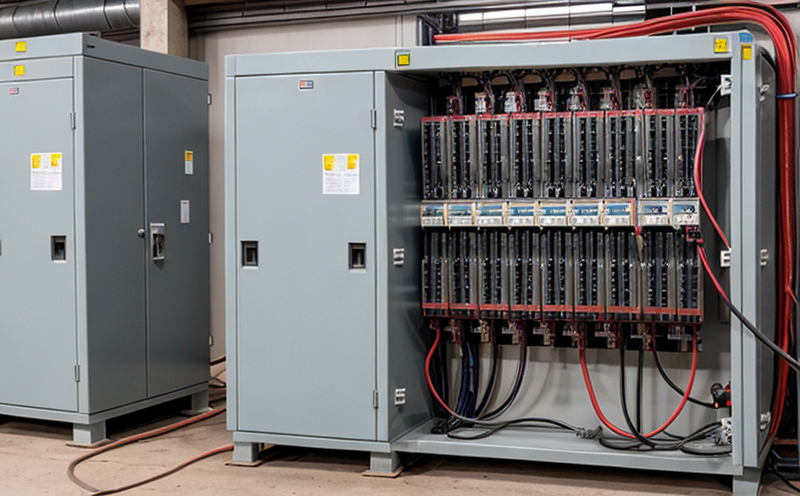IEC 60529 IP Protection Testing of Transformer Enclosures
The International Electrotechnical Commission (IEC) standard IEC 60529 provides a robust framework for the classification and testing of enclosures that protect electrical equipment from environmental factors such as dust, water, and other contaminants. This standard is particularly critical in the power & utilities sector where reliability and safety are paramount.
In the context of transformer enclosures, IEC 60529 IP protection ratings determine how well these units can withstand exposure to various external conditions without compromising their functionality or integrity. The testing process involves subjecting the enclosure to controlled environmental challenges that mimic real-world scenarios it might encounter during operation.
The first step in this testing procedure is preparing the specimen, which includes ensuring the transformer enclosure is clean and free of any contaminants that could affect the test results. Once prepared, the enclosure undergoes rigorous testing under defined conditions corresponding to its IP rating. For instance, an IP67 rating implies the device can be submerged in water up to a depth of 1 meter for at least 30 minutes without ingress of water.
Instrumentation plays a crucial role in this process, with specialized equipment designed to simulate environmental factors accurately and measure performance parameters. High-pressure water jets or misting systems are used to assess the enclosure's resistance against water ingress. Similarly, dust chambers help evaluate the effectiveness of the enclosure’s protective barriers.
The acceptance criteria for IEC 60529 IP protection testing are stringent and ensure that only those enclosures meeting or exceeding these standards receive certification. Compliance with these tests not only enhances product reliability but also ensures adherence to regulatory requirements, thereby fostering trust among consumers and stakeholders.
- Ensures long-term durability of transformer enclosures in harsh environments.
- Reduces maintenance costs by minimizing the risk of premature failure due to environmental exposure.
Why It Matters
The importance of IEC 60529 IP protection testing cannot be overstated, especially in sectors like power & utilities where the reliability and safety of equipment are non-negotiable. By adhering to these rigorous standards, manufacturers can ensure that their transformer enclosures perform optimally under various environmental conditions.
The tests conducted under this standard help identify potential weaknesses early on, allowing for necessary modifications before production begins. This proactive approach not only improves product quality but also enhances the overall safety profile of the equipment in operation.
Moreover, compliance with IEC 60529 standards is often a prerequisite for market entry and regulatory approval in many countries. It demonstrates a commitment to excellence and sets a benchmark for industry best practices.
In summary, implementing IEC 60529 IP protection testing ensures that transformers are robust enough to withstand the challenges posed by their operational environment, thereby extending their lifespan and enhancing overall system reliability.
Applied Standards
The primary standard governing IEC 60529 IP protection testing is International Electrotechnical Commission (IEC) Standard 60529. This international standard provides a comprehensive framework for the classification and testing of enclosures based on their ability to protect against various environmental factors such as dust, water, and other contaminants.
For transformers specifically, adherence to this standard ensures that the enclosures meet stringent quality benchmarks before they are deployed in critical power systems. The standard defines IP ratings (e.g., IP67) which specify different levels of protection against ingress from solid objects and liquids respectively.
The testing methodologies outlined in IEC 60529 involve subjecting the enclosures to controlled environmental conditions that simulate real-world scenarios. These tests include exposure to high-pressure water jets or misting systems for assessing resistance to water ingress, as well as dust chambers for evaluating protective barriers against particulate matter.
Compliance with these standards is not just about meeting regulatory requirements; it’s also a testament to the manufacturer's dedication to producing reliable and safe products. By adhering strictly to IEC 60529 guidelines, manufacturers can gain competitive advantages in terms of product quality and customer trust.
The international nature of these standards ensures consistency across different regions, making it easier for companies to standardize their testing procedures globally.





